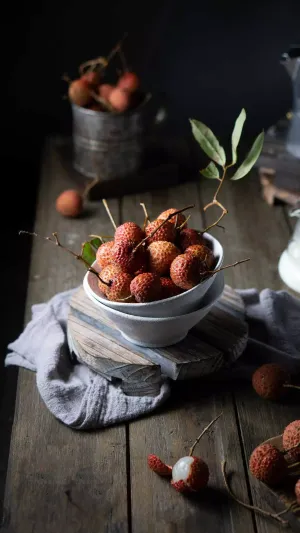Lychee, this delicious fruit has gained popularity across many Asian countries due to its sweet flavor and unique texture. Notably, its cultivation and utilization trace back to 2,000 years ago. Since then, it has journeyed across continents, enriching diverse cultures with its distinctive taste and aroma.
Originally cultivated in China, lychee made its way to Burma in the late 17th century and subsequently to India a century later. In 1954, Chinese immigrants introduced lychee to Australia, marking its expansion to the Oceania region.
Presently, lychee cultivation thrives in South and Central America, various parts of Africa, and throughout Asia, reflecting its global appeal and adaptability.
The lychee tree thrives in regions with high temperatures, humidity, and ample sunlight. Its genetic predisposition necessitates relatively low temperatures during bud differentiation, while frost can pose a threat, causing damage to the trees. Optimal flowering and fruiting occur under sunny and warm conditions, with adequate humidity, whereas dry spells or extreme weather conditions can hinder pollination and lead to yield losses.
The world's top ten litchi-producing countries and regions
<h3>1. China:</h3>
China stands as the cradle of lychee cultivation, boasting a rich heritage dating back to the 2nd century BC. With over 1,034 varieties documented in Guangdong Province alone, China produces approximately 200,000 tons of lychee annually. Key production provinces include Guangdong Province, Fujian Province, Guangxi Zhuang Autonomous Region, Yunnan Province, and Sichuan Province, with Guangdong leading national production, covering 65% of the total output.
Lychee found its way to Taiwan in 1760 and has since flourished across the island, particularly in regions with alluvial sandy loamy soils, such as the central and southern areas.
<h3>2. Thailand:</h3>
Thailand's lychee production centers around Chiang Mai, Fang, and Lamphun, benefiting from altitudes of 300 to 600 meters and a monsoon climate. Although lychee has a longstanding presence in Thailand, the introduction of high-quality Chinese varieties in the 1950s enhanced its cultivation.
<h3>3. Vietnam:</h3>
Northern Vietnam serves as a significant lychee-growing region, with areas like lowland and upland areas providing favorable conditions for cultivation. The country anticipates a substantial increase in lychee production in the coming years.
<h3>4. India:</h3>
With lychee cultivation dating back to the late 7th century, India predominantly grows the fruit in northern Bihar, followed by Uttar Pradesh and West Bengal. Most Indian lychee cultivars trace their origins to Chinese seedlings.
<h3>5. South Africa:</h3>
Imported from Mauritius in the early 1870s, lychee cultivation in South Africa has evolved, with approximately half of the country's produce exported to Europe.
<h3>6. Madagascar:</h3>
Introduced from Mauritius in 1770, Madagascar's lychee production focuses on the humid eastern coastal areas, with a significant portion exported to Europe.
<h3>7. Australia:</h3>
Lychee arrived in Australia over a century ago, brought by Chinese immigrants during the gold rush era. Today, it is grown across the country, with historical roots dating back to the 1850s in the Royal Botanic Gardens in Sydney.
<h3>8. Hawaii:</h3>
Introduced in 1873, lychee cultivation in Hawaii reached its peak in the 1960s, showcasing impressive tree heights and substantial yields. About 25,000 lychee trees were planted, with a production of about 250 tons.
From its ancient origins in China to its widespread cultivation in diverse corners of the globe, the lychee fruit continues to captivate palates with its irresistible flavor and culinary versatility.





